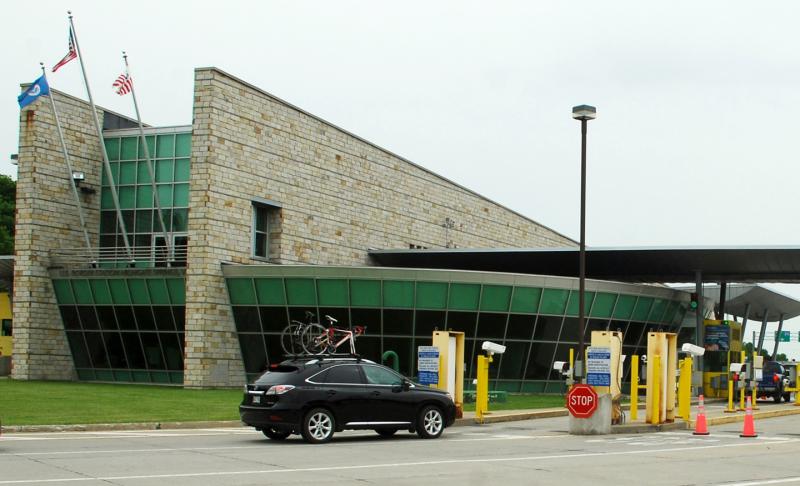ST. ALBANS, Vt. — U.S. Customs and Border Protection (CBP) at Vermont and New Hampshire ports of entry offers tips to help expedite cross-border travel during the busy Easter holidays and student spring break.
“Customs and Border Protection can appreciate how much stress holiday travel places on families. We want to assure travelers that there are steps they can take to minimize time spent at border crossings,” said Kevin Coy, CBP Area Port Director for the Area Port of St. Albans, Vt.
The best tip is to become a trusted traveler.
NEXUS allows pre-screened, low-risk travelers to proceed with little or no delay into the United States and Canada. NEXUS currently provides more than 800,000 members expedited processing at dedicated border-crossing lanes, at NEXUS kiosks in CBP preclearance airports in Canada, and at maritime reporting locations.
Travelers may apply online at the CBP website or the Canada Border Services Agency website. NEXUS information is also available toll-free at 1-(866)-NEXUS 26 (1-866-639-8726).
The next best advice is to ensure that you have a radio frequency identification (RFID) enabled travel document, such as a U.S. Passport Card, Enhanced Driver’s License, Enhanced Identification Card, or a trusted traveler program membership card (NEXUS, SENTRI or FAST/EXPRES).
Here is a Top-10 list of smart border-crossing travel tips:
- Tip 1 – Download CBP’s Border Wait Times app. Check border-crossing wait times by Port of Entry before you start your trip at CBP’s Border Advisories and Wait Times website. You can also download CBP’s Border Wait Times app free from Apple’s App Store and Google Play.
- Tip 2 – Plan for extra time or an alternate route during peak travel times. For example, travelers might use the nearby and less heavily traveled Beecher Falls Port of Entry instead of the busier Derby Line Port of Entry. View CBP’s Border Advisories and Wait Times website or app for wait times.
- Tip 3 - Prepare for the inspection process before arriving at the inspection booth. Have your identity and crossing documents available for the inspection. These include a WHTI-compliant document for U.S. citizens and nonimmigrant aliens from Canada, Bermuda, and Mexico. U.S. lawful permanent residents I-551 form (green card) is acceptable at land and sea Ports of Entry. For more information, please visit CBP’s Western Hemisphere Travel Initiative website.

- Tip 4 – Put down your cell phone. Cell phones delay CBP inspection, and impacts everyone in line.
- Tip 5 – Know state alcohol, tobacco, and firearms laws. Travelers should learn about state laws concerning transporting alcohol, tobacco or firearms across state lines.
- Tip 6 – Report all currency. There is no limit to how much currency you may take in or out of the U.S. However, U.S. federal law requires you to report your total currency of $10,000 or more. Currency includes all forms of monetary instruments. Travelers who fail to truthfully report all of their currency risk their currency being seized, and may face criminal charges.
- Tip 7 – Declare all food items. You may bring prepared foods into the U.S. from Canada for personal use. Importing food for resale or for commercial use, visit www.fda.gov or contact your local CBP office for more information. If you are unsure if the food products you are bringing to the U.S. are admissible, visit CBP’s Bringing Food to the US website, or check with your local CBP office before arrival. Kinder Chocolate Eggs remain prohibited as they are not compliant with FDA regulations.
- Tip 8 – Declare all goods and gifts. All travelers and vehicles are subject to CBP border searches. Declare everything you purchased or acquired outside of the United States to a CBP officer. Travel with unwrapped gifts, and then wrap your gifts before you reach your destination.
- Tip 9 – Declare all medicines. All valid non-expired prescription medications should be in the original prescription containers with all pertinent information listed on the label. Illicit narcotics are illegal to possess or to use in the U.S.
- Tip 10 – Transporting pets. Cats and dogs must be free of disease and illness when entering the U.S. Dog owners must be able to show proof of rabies vaccination. If crossing with a puppy, prior CDC approval and accompanying paperwork is required. Bird owners must pre-arrange for a veterinary inspection with USDA Veterinarian Services at designated ports. Learn more about Bringing Pets or Wildlife into the United States.
Other questions:
- Do you need a Department of State Visa to enter the United States?
- Do you need a CBP I-94/94W form to enter the United States?
- What items are Prohibited and Restricted Items from bringing to the United States?
These CBP travel tips are simple to follow and help you to cross the border as quickly and as safely as possible. For more information, please visit the CBP’s Know Before You Go website.

